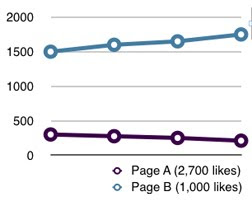
Yesterday, I received some thank you notes from students in an intermediate class, ranging from third to fifth grade. I had made a modest donation to fulfill a DonorsChoose project request for a phonics program because the students haven't mastered reading and writing.
The pictures alone tell the story. While my own daughter, age 4, is learning to spell and recognize simple words, these children are struggling to the do the same. Imagine that for a moment. They're in third grade to fifth grade.
Sure, it's very likely some of these children are new immigrants (not all of them are), placed at a grade level based on age. But sooner or later, they will be combined into standardized classrooms to either fail or command so much attention from a teacher that the entire classroom will struggle with rudimentary skills so slower classmates can catch up.
"Education is not the filling of a pail, but the lighting of a fire." — William Butler Yeats
I've never met a kindergartener, first grader, or second grader who is disinterested in school. So when does it happen, exactly?
If you believe Waiting For Superman, it happens sometime in the fourth grade. Personally, I think it happens well before the fourth grade — the foundation is laid as early as the first grade when teachers begin to assign labels for success.
 The problems with the education system merely manifest in the fourth grade, when testing begins and the children start to exhibit whatever predestined labels have been attached to them. This child is an overachiever; this child is an under performer — with most of those labels being assigned for very little reason other then their willingness to conform to an environment or their socio-economic background.
The problems with the education system merely manifest in the fourth grade, when testing begins and the children start to exhibit whatever predestined labels have been attached to them. This child is an overachiever; this child is an under performer — with most of those labels being assigned for very little reason other then their willingness to conform to an environment or their socio-economic background. What's especially odd, however, is that students aren't as aware of their socio-economic background when they enter school as the teachers who educate them. They are also less aware of other identifiers too. Skin color makes little difference to them. Religious preference doesn't enter playtime conversations. Role modeling is mostly non-existent, at least among new peers.
For the most part, any pressures they face pale in comparison to those Ruby Bridges Hall faced as the first black American to go to an all-white school in New Orleans. She graduated and became a travel agent. Obviously, she wasn't deficient or predestined to fail despite her circumstances.
At yet, here in Nevada, we continually hear that socio-economics has driven the state to have the worst high-school dropout rate in the nation. Most studies suggest that low-income families are the primary driver. Others claim Nevada's poor performance is merely a matter of how the numbers are crunched, saying that the state's rates suffer from poorly performing students who move here. Others say it is because not enough is being invested in education.
The excuses don't seem to account for the trends tracked by America's Promise Alliance. That organization noted that the number of high schools in Nevada deemed “dropout factories” rose from eight in 2002 to 34 in 2008, with the increase representing nearly 54,000 students. During that time, the state's graduation rate fell from 72 percent to 51 percent. Population growth has also since slowed, especially during the recession.
"Education is what remains after one has forgotten what one has learned in school." — Albert Einstein
The problem, here, in part has nothing much to do with anything politicians talk about. The problem is centered around one of three discussion points — scarcity of resources, socio-economic issues, politicizing the classrooms. Simply put, the state fails because either the state or select school districts invent reasons to fail and then pass those reasons on to the students.
 Or, to match the excuses with common language — it's a lack of funds, it's the parents' fault, and it's the students' fault. Seriously? Our children are being told they will fail because success isn't in the budget, their parents are poor or are single parent households, and because they or their classmates come from other disadvantaged school systems (or countries).
Or, to match the excuses with common language — it's a lack of funds, it's the parents' fault, and it's the students' fault. Seriously? Our children are being told they will fail because success isn't in the budget, their parents are poor or are single parent households, and because they or their classmates come from other disadvantaged school systems (or countries).I don't believe it, any of it. Nevada students fail because they are given every reason to fail. Since I went to school in Nevada, there has been a dramatic shift to improve grades and educational scores by encouraging all of the children to shoot for the minimum standards.
But as any teacher ought to know, when you tell students to shoot for the base minimum, they won't all measure up to that bar. If you want them to succeed, the expectation is no less than 100 percent or more, while reinforcing than anything but doesn't constitute failure. Students shooting for higher marks, even when they falter, hit 80 percent or better regardless of funding, socio-economics, or preassigned excuses.
"If you think education is expensive, try ignorance." — Andy McIntyre
Some people tell me that my experience as a teacher is tainted because I work with students who have elected to be there. (If that were true, all college students would earn As in every subject.) I humbly disagree. The challenge is greater because the education system has already failed many of them, given their lack of mastery of the English language.
We have no privileges in this class. I don't have any special monetary funding to get them where they need to be (I lose money teaching); there was even one year that everyone had to wear coats because the heater in the room was broken. The students come from every socio-economic background (unemployed to financially successful). They are ethnically diverse, with some speaking English as a second language. They have varied education backgrounds (high school dropouts to master's degrees).
But in my class, there are also no excuses, labels, or unrealistic expectations.
And every year, it only takes one or two assignments for the students to learn that I cut no breaks. The class average on the first assignment is in the 60s (high school level writing or less); the average on the last assignment is in the 80s (better than the writing provided by an average working professional). This is done in ten weeks (about 16-18 hours, plus 16-18 hours of homework).
My expectations are simple. Regardless of where they start, they will be better writers by the time the class ends if they do every assignment (and rewrites after the assignment). At minimum, they will be able to write one standard news release without common errors by the end of the session. But they really learn more than that, more than many working professionals.
That is not to say some don't drop. I lose one for every ten. But then again, they have an entire life of baggage by the time they come here. In contrast, every kindergartener, first grader, or second grader that I've ever met wants an education.
So why I support programs and individual projects at DonorsChoose.
 I supported the literacy program by the aforementioned teacher to give them another educational tool and help the kids overcome the stigma. You see, those students are in a special class, with a 50-50 shot of drawing a teacher who cares or a teacher who collects a paycheck.
I supported the literacy program by the aforementioned teacher to give them another educational tool and help the kids overcome the stigma. You see, those students are in a special class, with a 50-50 shot of drawing a teacher who cares or a teacher who collects a paycheck.Obviously, they have the former, given she is seeking outside help. So, by funding their educational needs, I would like to think that I sent a message to the students and the teacher that the ROI on learning to read is worth it. They seem to based on the thank you notes.
Other than that, I don't care where they came from because they are not disadvantaged in my eyes. They all have the potential to excel, assuming the expectations are high enough and the system allows them.
But isn't it the same with any job? Most new employees want to excel too, until their employer or supervisor proves to them otherwise. Yeats might have been talking about education, but his idea really applies to everything. At least I think so.










































